Catalan Christmas traditions are a blend of the strange and the delightful, with a heavy dose of fun.
And yes, they involve a surprising amount of poo, but we promise there’s more to it than meets the eye! We’ll explain where all this craziness comes from, and maybe you’ll end up loving these traditions, too. And hey, not all of our traditions are poo-related, especially the culinary ones (thankfully)!
In this article, we’ll take you through the traditions that make a Catalan Christmas so memorable, from the beloved Caga Tió to the hilarious Caganer. Keep reading to find out why we love our unique way of celebrating Christmas and how you can experience it for yourself!
* Post written for the first time in November 2021 and updated in October 2025.
Catalan Christmas traditions
Caga Tió (the pooping log)
Picture this: you’ve decided to spend your Christmas holidays in Catalonia, and you go to a Christmas market. As you walk through the stalls, you feel something watching you.
You soon realise that most of what you thought were Christmas decorations are actually hundreds of wooden logs wearing barretina hats, all smiling at you.
While you’re trying to figure out if their smile is friendly or just creepy, some kids with sticks in hand run toward the logs and start hitting them while singing songs.
Well, as strange as it may seem, this is no horror movie or sectary ritual. This is one of the best Catalan Christmas traditions!
While kids elsewhere are hanging stockings and hoping Santa delivers, Catalan children take things a step further. We’ve got to work for our gifts.
How the Tió tradition works
In the days leading up to Christmas, children take care of their Tió. They cover it with a warm blanket and feed it treats like clementines, cookies, and chocolate (which the parents happily eat when the kids aren’t looking!).
On Christmas Eve (aka “the night of defecation”), the Tió poops presents. Kids gather around it with sticks and start beating it while singing a traditional song imploring the log to dump various goodies. The song goes like this:
“Caga Tió, Tió de Nadal, no caguis arengades que són salades, caga torrons que són molt bons.”
Which translates roughly to:
“Poo Tió, Christmas Tió, don’t poo herrings, they’re too salty, poo nougat, it’s delicious.”
After the kids have smacked the resilient log, they lift the blanket to reveal all the gifts that have magically appeared.
But don’t expect anything too fancy! The Tió only drops what other kids would consider stocking fillers: sweets, socks, undies, or sweet “coal” (a candy with a crunchy almond flavour). The bigger gifts arrive on Jan 6, courtesy of the Three Kings.
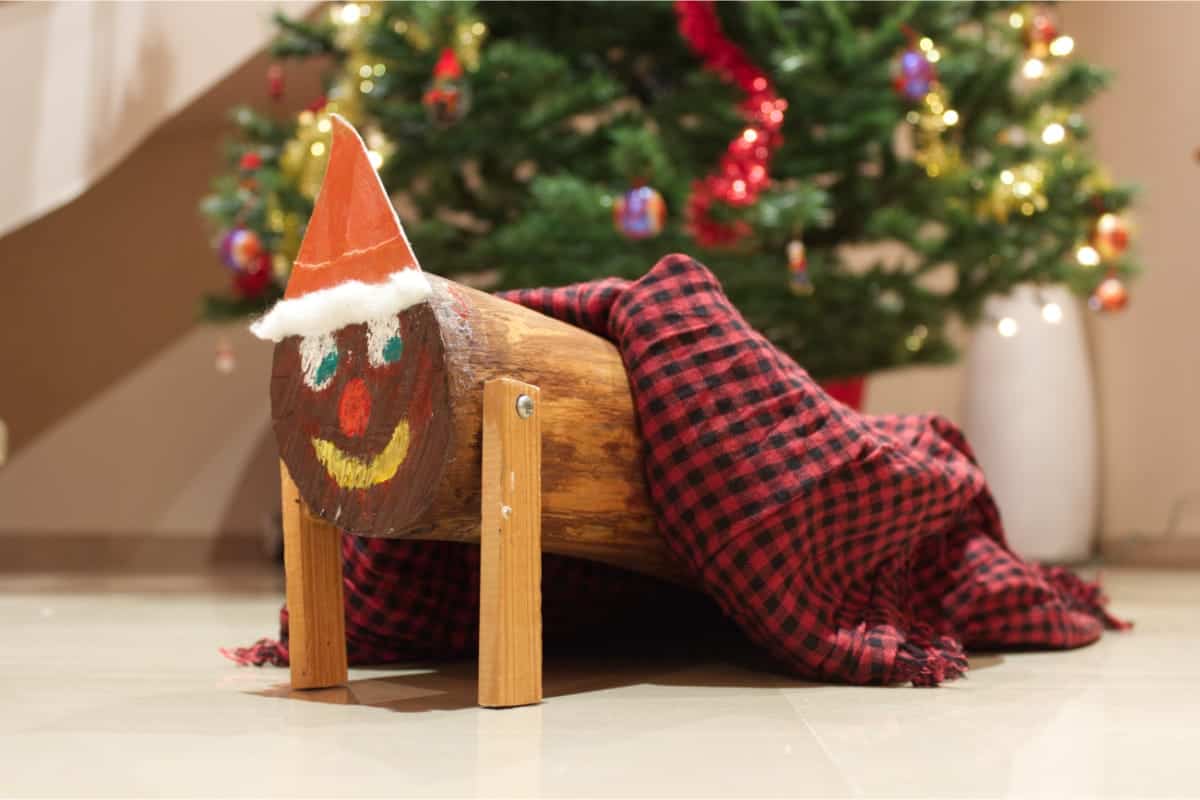
Caganer (the Christmas ‘crapper’)
Our Catalan ancestors, not satisfied with just one faeces-themed tradition, created another: the caganer.
You’ve probably heard of or seen this quirky figure: a small figurine of a peasant, wearing a barretina (a traditional red Catalan hat), squatting and mooning while he… well, does his business.
This alone is weird enough, but the story really gets bizarre when you know the traditional spot to place the caganer. We smack this funny little fellow in the middle of the nativity scene, right there with baby Jesus, Mary, Joseph, and the whole gang.
Although its origins are murky, the caganer is believed to symbolize fertility and bring good luck. Adding healthy poo to soil makes for better crops, after all!
You’ll find caganers in all shapes and forms at most Catalan Christmas markets. Nowadays, he is such a popular character that many celebrities and public figures are honoured to be portrayed as a Christmas ‘crapper’. Singer and songwriter Rosalía, football player Leo Messi, film director Woody Allan… you name it!
Such is his cult status that caganers even have their own association: Amics del Caganer (Caganer’s Friends). They make sure to give visibility to this important character and organise activities related to him.
👌🏼 Our tip
We guess the question that springs to mind now is, “Where can I get a Shakira caganer?” We’ve got you covered! We have a whole blog post about the Christmas markets in Catalonia where you can find this cheeky chappy in all its forms.
If you want a caganer so badly you can’t wait to come here, we’ve some good news for you: Caganer.com has a wide range of caganers and delivers them worldwide.
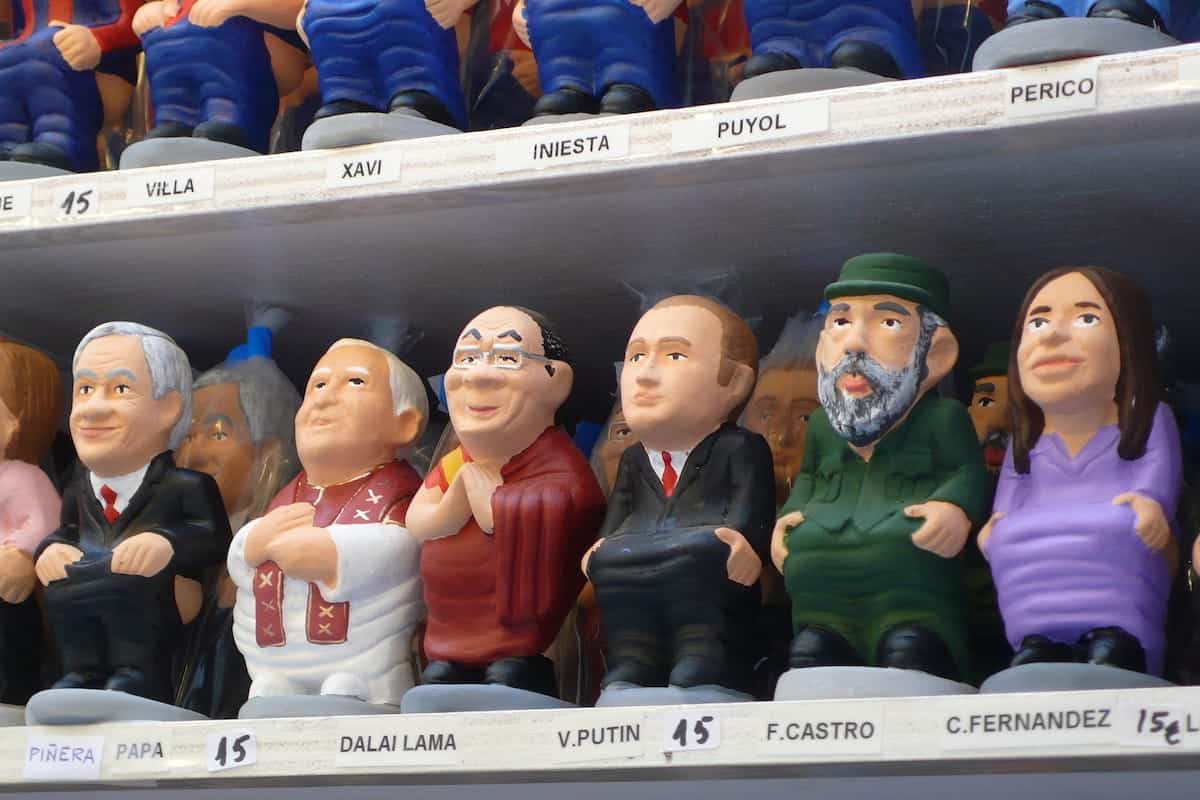
Pessebre (Catalan nativity scene)
Catalans like to work extra when adorning the house for the Christmas festivity. Besides the Christmas tree, we also spend time setting up the pessebre, a detailed representation of Jesus’ birth in Bethlehem.
When setting up your pessebre, creativity is key. For example, you can either use water to make the river (which is rather difficult) or use aluminium foil instead. What about snow? Of course it was snowing when God’s son came to the world! For that, some flour will do the trick.
Oh, never ever forget the caganer in the pessebre! No one knows who had the brilliant idea of putting a defecating peasant among the persons witnessing Jesus’ arrival, but it’s one of the Catalan Christmas traditions we love the most!
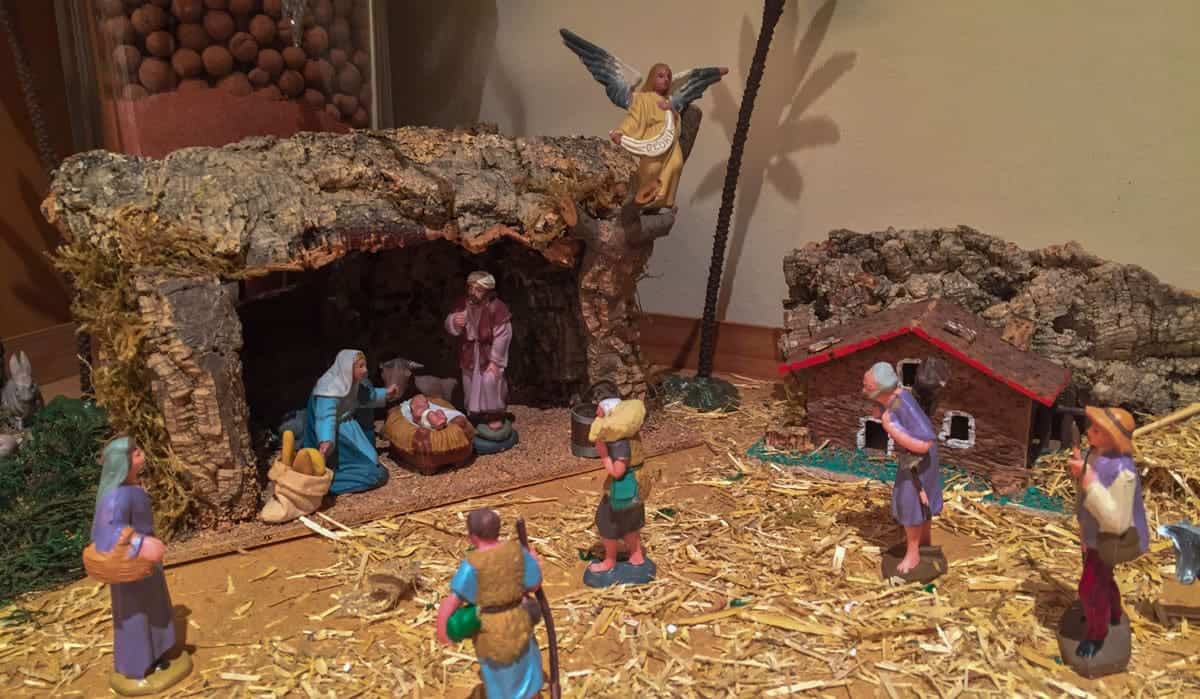
Missa del Gall (Rooster’s Mass)
The Missa del Gall, literally translated as Rooster’s Mass, is the Catholic mass celebrated at midnight on Christmas Day. That’s it. Just a mass that happens after people pigged out on all the delicious food of Christmas Eve’s dinner.
The name of this mass comes from the widespread belief that the only time a rooster crowed at midnight was on Christmas Day when Jesus was born. Despite the name, no roosters are involved!
Eating twelve grapes on New Year’s Eve
When clocks are about to strike midnight on New Year’s Eve, people from across the world greet the New Year by popping champagne, setting off fireworks, or kissing and hugging their loved ones. But all of this has to wait in Catalonia. The last twelve seconds of the Catalans’ New Year are somewhat more intense, as we’re too busy stuffing twelve “miraculous grapes” in our mouths (one for each chime of the clock before midnight).
When the 12 chimes finish, and we have swallowed (or not) the last of the grapes, it’s time for hugs, well-wishing calls, and a toast with cava. All of that while the most expensive commercials of the year play on TV.
And why all this fuss? Well, it’s all a matter of luck, and rare is the person who will risk poisoning their fate for the coming year by skipping the grapes.
How the twelve grapes tradition works
Just before midnight, the bells ring out four times in quick succession. You wouldn’t be the first to start cramming the grapes in your mouth, but patience! You have to ignore those four chimes. After a slight pause, a series of 12 chimes begin, one for each month of the year.
There is little time to chew and swallow, even much less to savour. About a second after stuffing the first grape in your mouth, there’s a second dong, and it’s time to pop the second grape into the mouth. And on through 12 chimes.
It’s no easy task getting the 12 grapes down in time. By grape number six or seven, things start getting complicated. The giggles kick in, and people start making gagging noises. By grape eight or nine, the giggles turn into hysterical laughs, complicating things even more. Eating the grapes pretty much guarantees that the year will start off with a bit of an adrenaline rush!
What’s the secret to finishing the grapes, then?
Some have the trick of shoving all of the grapes in their mouth at once. Worries about swallowing them later. You might imagine that such a strategy is easier to plan than to execute. Others say the trick is not to chew; just take a solid bite and then swallow, take pips, and all. Then, there are those people (we included) who painstakingly remove the seeds beforehand or buy small cans of 12 seedless peeled grapes. It all comes down to the level of challenge you’re after!
Reis d’Orient (the Three Kings)
Unlike other countries, Christmas time in Catalonia doesn’t finish at the beginning of the new year. We wanted more! After making a pig of ourselves with endless Christmas meals and having a hard time dealing with New Year’s Eve hangover, it’s time for another celebration: the arrival of the Three Magic Kings.
The Three Kings were three wise men who embarked on an adventure to find the holy Messiah and bring him precious gifts. Fortunately, they kept their trousers up! Guided by a star (no Google Maps available at the time), they found the newborn Jesus and offered him gold, incense and myrrh.
To celebrate it, we throw a big parade on the evening of Jan 5 in every Catalan city and village. You’ll see the mineworkers who make carbon for those who haven’t behaved well enough, the helpers who collect the letters the kids have written to the Kings, and the Three Kings themselves. Melcior (white beard), Gaspar (brown beard) and Baltasar (no beard and dark skin) are ready for a tough night of non-stop deliveries.
During the parades, the different characters throw sweets at the people watching and greeting them. Don’t forget to bring a bag to collect them if you go to see a parade. And be careful with your head; you don’t want to end up with a contusion caused by candy!
On Jan 6, children run to their parents’ bedroom, waking them up early and ruining a day they could have used to sleep for hours because it’s time to open the presents awaiting under the Christmas tree!
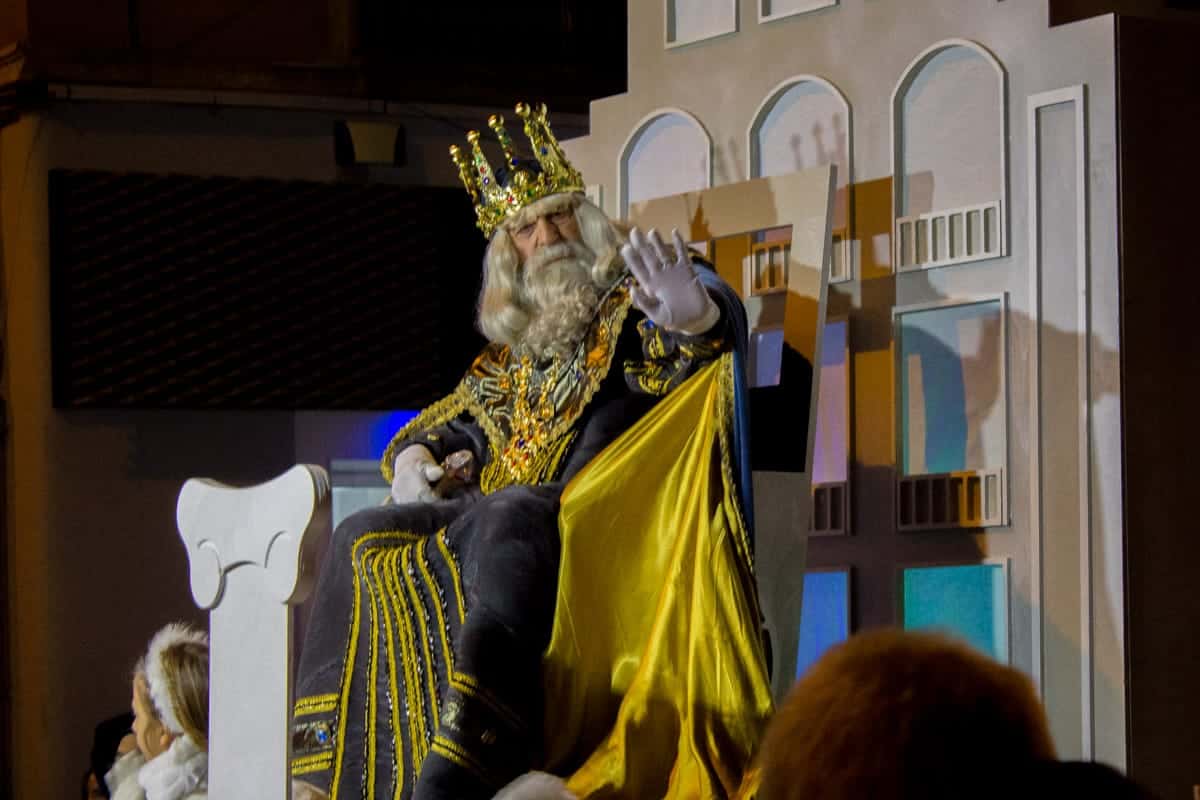
Tortell de Reis
After everyone unwraps all the presents brought by the nice Three Kings, a family lunch usually comes after. Nothing special about lunch, we eat it every day. What’s particular and worth mentioning is the dessert: a special doughnut-shaped cake called the Tortell de Reis. It’s a ring-shaped cake with glazed fruit stuffed with marzipan and cream.
So far, so good. Nothing weird, no poo involved! What’s strange about this cake, then?
Hidden somewhere inside the cake, there’s a broad bean and a small figurine of a king. Hey, it’s forbidden to look inside the cake before eating it! No cheating, please.
While eating it, someone will be fortunate enough to find the king. Someone else, though, will have the miserable luck of finding the broad bean. The tradition says that whoever finds the broad bean must pay for the cake, whereas the one who has found the king will be crowned king for that day.
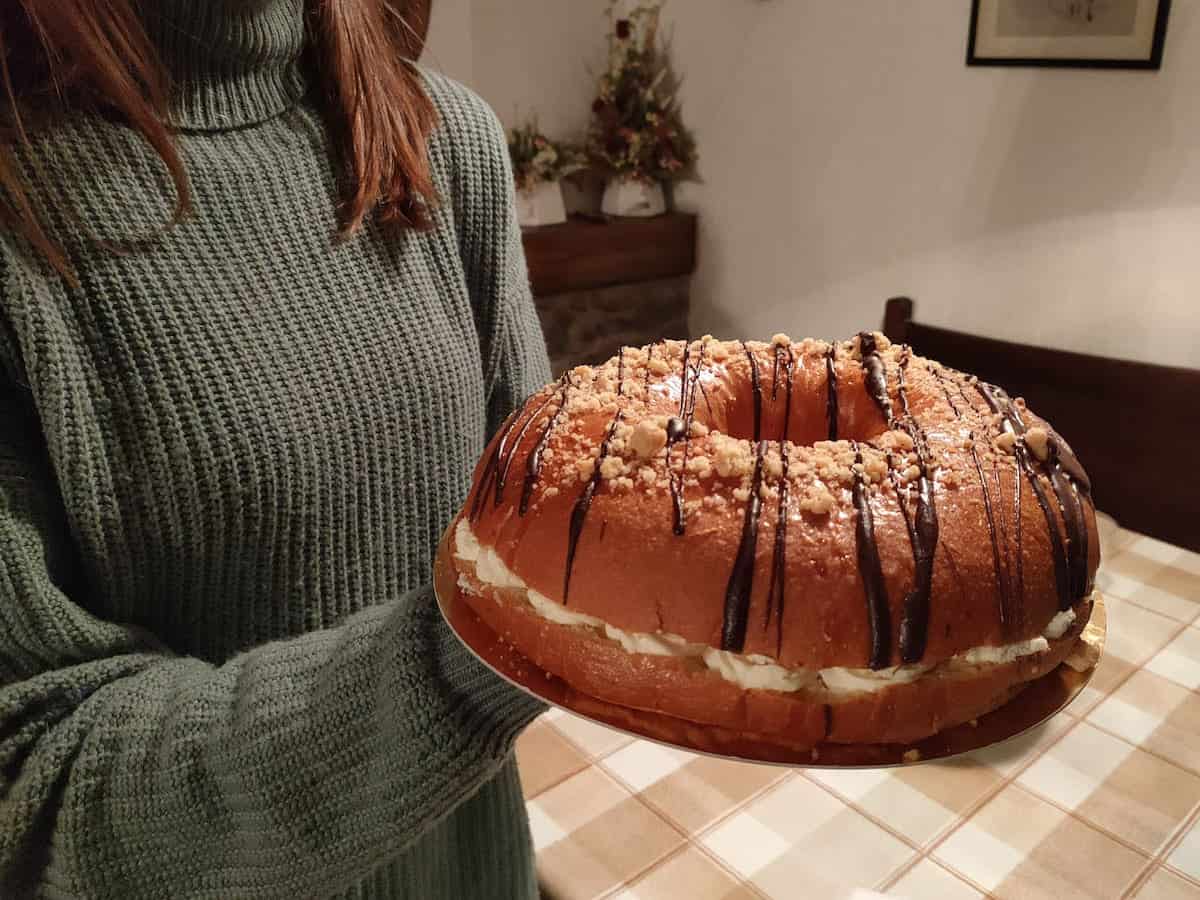
We know we’re biased, but we love how we celebrate Christmas. If, after learning about the most significant Catalan Christmas traditions, you find yours a bit boring, it’s time to adopt ours and level up your Christmas celebration!
More Christmas inspiration
Are you coming to Catalonia during Christmas? Then, these guides will help you plan your trip:

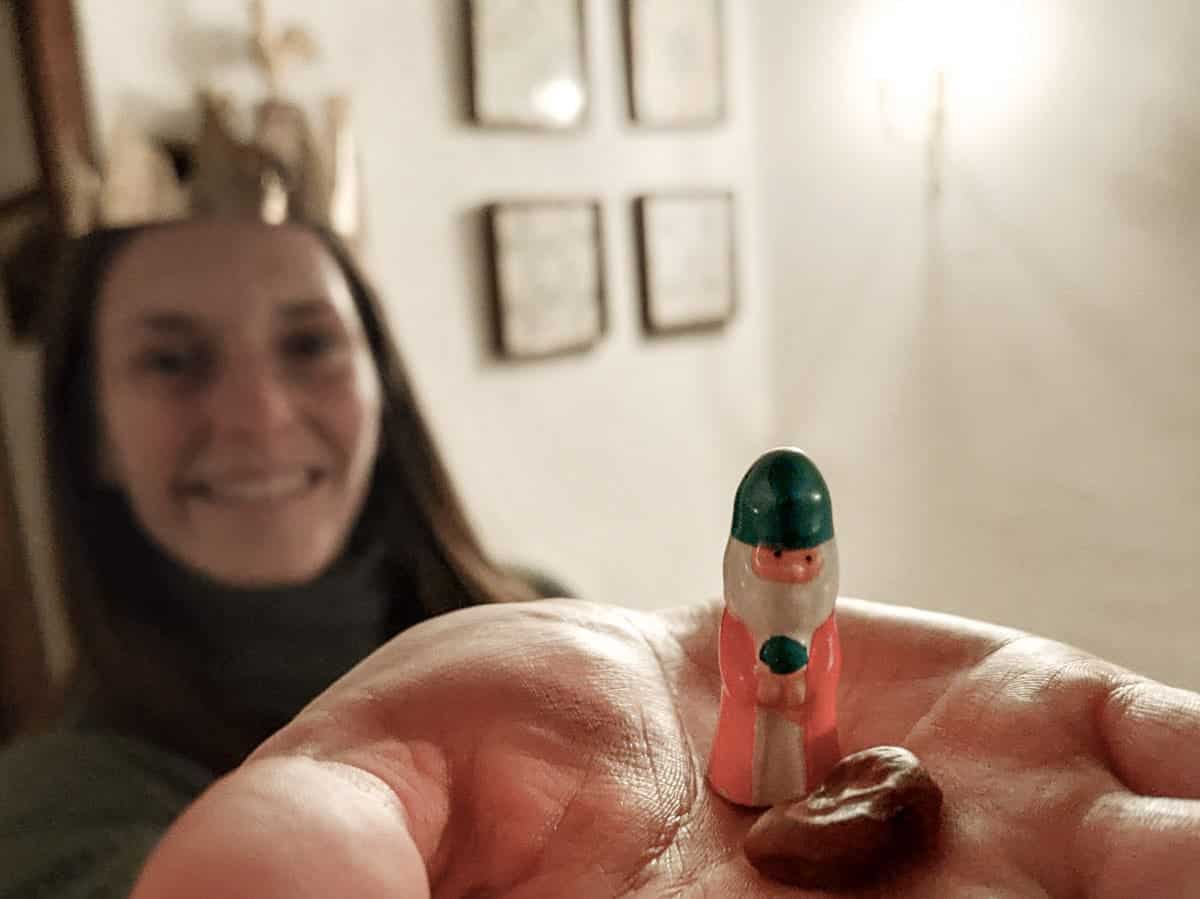
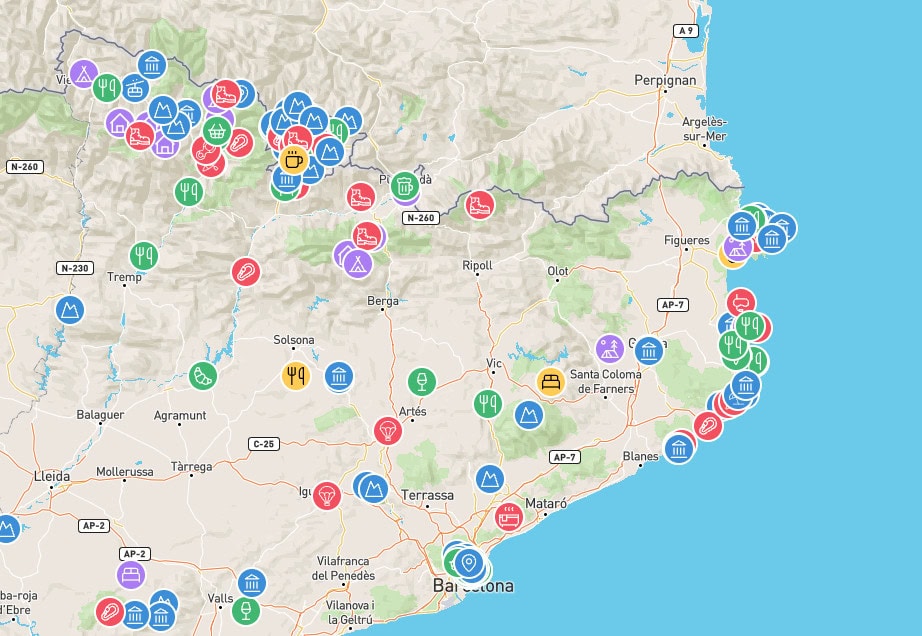
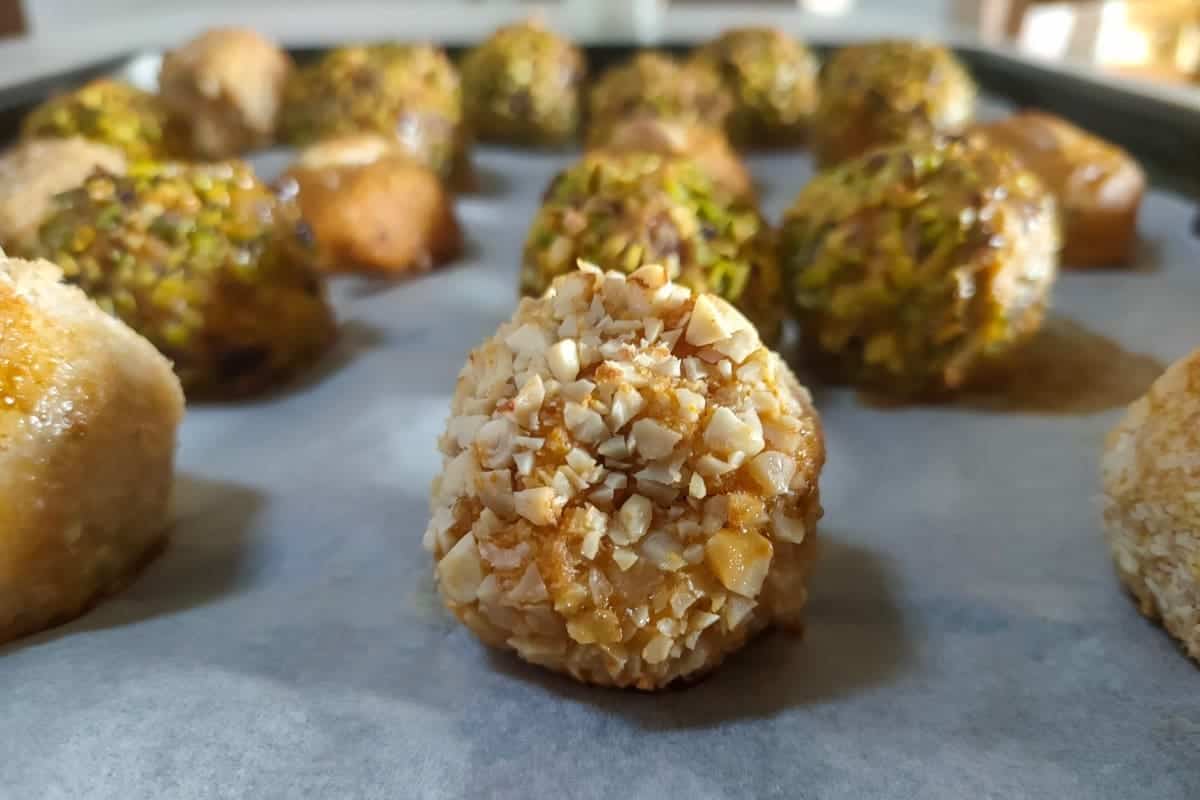

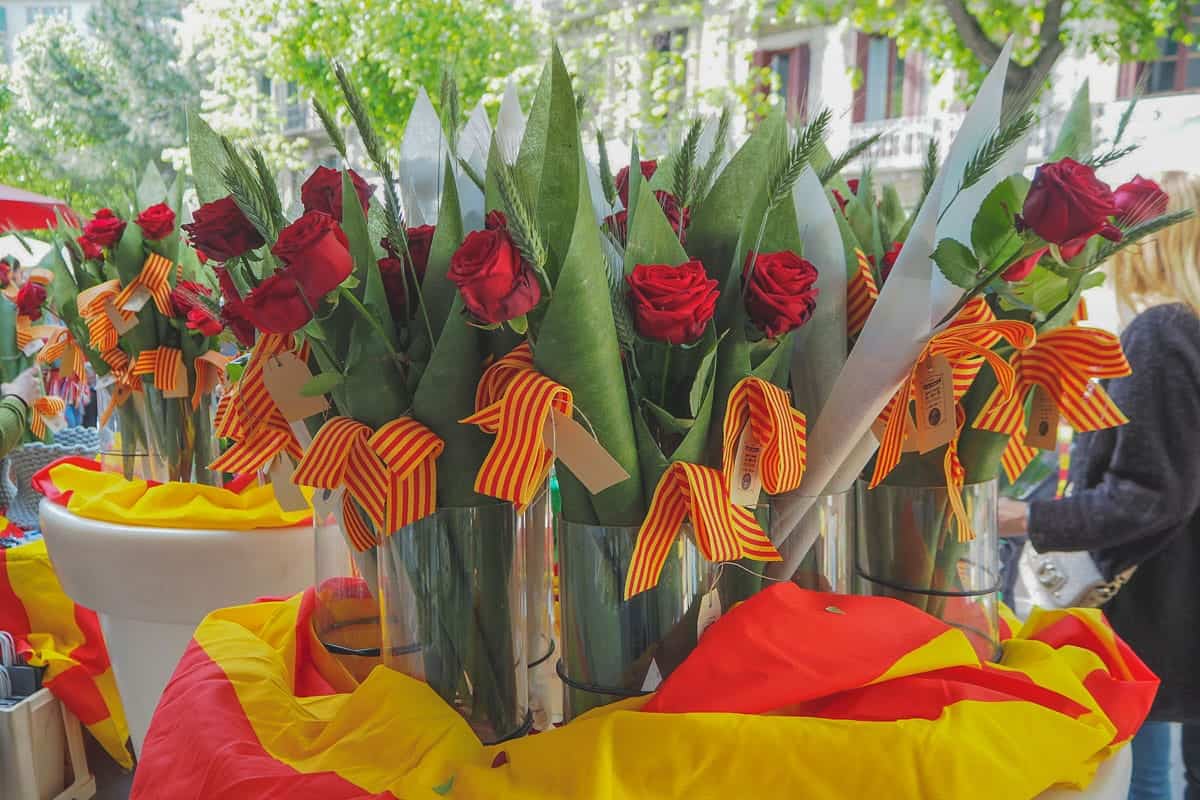
0 Comments